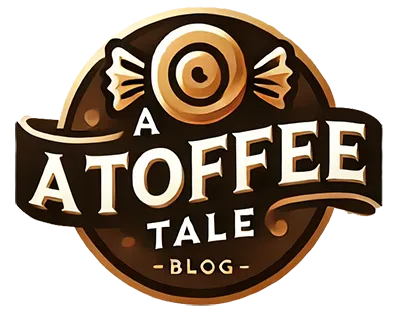Can Dogs Eat Farro? What Every Dog Owner Should Know in 2024

Can Dogs Eat Farro? Farro is an ancient wheat grain that’s known for its high nutritional value. It’s packed with fiber, protein, and essential nutrients, making it a popular choice in human diets.
Some pet owners consider farro as an occasional treat for their dogs. But is it a good choice for your furry friend? Let’s dive into what you need to know before adding farro to your dog’s diet.So, let’s explore together-can dogs eat farro?
Is Farro Safe for Dogs?
Can Dogs Eat Farro? ok, Farro, a nutritious ancient grain, can be a safe addition to your dog’s diet when introduced appropriately. However, it’s important to consider specific factors to ensure it is beneficial and safe for your pet. Here’s what you need to know:
Generally Safe When Cooked and Moderated
- Moderation is Key: Farro is safe for most dogs when served in moderation and properly cooked. It should be introduced as an occasional treat or supplement rather than a primary food source.
- Cooking Required: Always cook farro thoroughly before offering it to your dog. Cooking helps make the grain more digestible and reduces the risk of digestive issues.
Not Suitable for Dogs with Wheat or Gluten Sensitivities
- Gluten Concerns: Farro contains gluten, which can trigger allergic reactions or sensitivities in dogs with wheat or gluten allergies. Symptoms might include itching, vomiting, or diarrhea.
- Alternative Options: For dogs with these sensitivities, consider gluten-free alternatives like brown rice, oatmeal, or quinoa.

Consult Your Veterinarian
- Seek Professional Advice: Before adding farro or any new grain to your dog’s diet, consult with your veterinarian. They can provide guidance based on your dog’s health status and dietary needs.
- Assess Suitability: Your vet can help determine if farro is a good fit for your dog and how to introduce it safely.
Can Dogs Eat Farro? By following these guidelines and consulting with your vet, you can ensure that farro is a healthy and safe option for your dog’s diet.
Nutritional Benefits of Farro for Dogs
Can Dogs Eat Farro? ok,Farro is not just a tasty treat; it offers several nutritional benefits that can support your dog’s overall health. Here’s how incorporating farro into your dog’s diet can be beneficial:
High in Fiber
- Aids Digestion: Farro is rich in dietary fiber, which helps support healthy digestion. Fiber promotes regular bowel movements and can prevent constipation.
- Promotes Gut Health: The fiber content in farro helps maintain a healthy gut, which is essential for overall well-being and nutrient absorption.
Contains Protein
- Supports Muscle Function: Farro provides a good source of plant-based protein. Protein is crucial for maintaining and building muscle mass, which is important for your dog’s physical health.
- Boosts Energy Levels: Protein also contributes to overall energy levels, supporting your dog’s activity and vitality.
Loaded with Vitamins and Minerals
- Magnesium: Farro contains magnesium, which supports bone health and muscle function. Magnesium is also involved in energy production and maintaining a healthy nervous system.
- Iron: The iron in farro helps with oxygen transport in the blood, which is vital for your dog’s energy and overall health.
- B Vitamins: Farro is rich in B vitamins, which are important for energy metabolism, skin health, and cognitive function.
Can Dogs Eat Farro? Incorporating farro into your dog’s diet can provide these nutritional benefits, enhancing their overall health and vitality. However, it’s important to introduce it gradually and consult with your veterinarian to ensure it fits well with your dog’s specific dietary needs.
Risks of Feeding Farro to Dogs
Can Dogs Eat Farro?Ok, While farro offers several nutritional benefits, it’s important to be aware of potential risks associated with feeding it to your dog. Here’s a closer look at the possible downsides:
Gluten Content
- Allergic Reactions: Farro contains gluten, which can cause allergic reactions in dogs with gluten sensitivity or wheat allergies. Symptoms may include itching, swelling, or gastrointestinal upset.
- Sensitive Dogs: If your dog has a known sensitivity or allergy to gluten, farro might not be a suitable choice. Consider gluten-free alternatives to avoid adverse reactions.
Digestive Issues
- Overfeeding Risks: Feeding too much farro can lead to digestive problems such as bloating, gas, or diarrhea. Farro is high in fiber, and excessive amounts may overwhelm your dog’s digestive system.
- Portion Control: To minimize risks, serve farro in moderation and as part of a balanced diet. Monitor your dog for any signs of digestive discomfort and adjust the amount if needed.
High Carbohydrate Content
- Weight Gain Concerns: Farro is relatively high in carbohydrates. Overfeeding can contribute to weight gain, especially if not balanced with other low-calorie foods and adequate exercise.
- Balanced Diet: Ensure farro is only a small part of your dog’s overall diet. Balance it with proteins and vegetables to maintain a healthy weight and prevent excess calorie intake.
Understanding these risks can help you make informed decisions about-Can Dogs Eat Farro? Including farro in your dog’s diet. Always introduce new foods gradually and consult with your veterinarian to ensure they are suitable for your dog’s health and dietary needs.
Can Dogs Eat Farro? How to Safely Serve Farro to Your Dog
Can Dogs Eat Farro? If you decide to add farro to your dog’s diet, it’s crucial to prepare and serve it correctly to ensure it’s safe and beneficial. Follow these guidelines to incorporate farro into your dog’s meals safely:
Cook Farro Thoroughly
- Digestibility: Always cook farro thoroughly before offering it to your dog. Cooking breaks down the grain, making it easier for your dog to digest and absorb nutrients.
- Avoid Raw Farro: Raw or undercooked farro can be hard for dogs to digest and may cause gastrointestinal issues.
Serve Plain and Unseasoned
- No Added Ingredients: Serve farro plain, without any added seasonings, salt, butter, or oils. These additives can be harmful to dogs and may lead to digestive upset or other health issues.
- Simple Preparation: Keep the preparation simple to ensure your dog receives the full benefits of farro without any unnecessary additives.
Introduce Gradually
- Start Small: Introduce farro into your dog’s diet gradually. Begin with small portions to allow your dog’s digestive system to adjust.
- Monitor for Reactions: Observe your dog for any signs of intolerance or adverse reactions, such as vomiting, diarrhea, or changes in behavior. If you notice any issues, discontinue farro and consult your veterinarian.
Can Dogs Eat Farro? By following these steps, you can safely include farro in your dog’s diet while minimizing the risk of adverse effects. Always consult with your veterinarian before introducing new foods to ensure they are appropriate for your dog’s specific health needs.
Alternatives to Farro for Dogs
Can Dogs Eat Farro? If you’re looking for alternatives to farro that can also be beneficial for your dog, there are several options to consider. These alternatives can provide similar nutritional benefits without some of the risks associated with farro, especially for dogs with specific dietary needs.
Grain Alternatives
- Quinoa: Quinoa is a great gluten-free option that offers high protein and fiber content. It’s also rich in essential vitamins and minerals, making it a nutritious choice for dogs.
- Brown Rice: Brown rice is another safe alternative that provides fiber and essential nutrients. It’s easy to digest and often used in dog food to promote digestive health.
- Oatmeal: Oatmeal is a good grain option for dogs, providing fiber and helping with digestive health. It’s gentle on the stomach and can be a soothing addition to your dog’s diet.
Non-Grain Alternatives
- Sweet Potatoes: Sweet potatoes are rich in fiber, vitamins, and minerals. They are an excellent gluten-free option that supports digestive health and provides a nutritious boost.
- Pumpkin: Pumpkin is another beneficial alternative, offering high fiber content and nutrients like vitamin A and potassium. It’s often used to help with digestive issues and can be a tasty addition to your dog’s meals.
Balanced Diet Considerations
- Tailored Nutrition: When choosing alternatives, ensure they are appropriate for your dog’s specific dietary needs. Each dog may have different requirements based on age, health, and activity level.
- Consult Your Vet: Always consult with your veterinarian before making significant changes to your dog’s diet. They can provide guidance on the best alternatives based on your dog’s health and dietary needs.
Can Dogs Eat Farro? Ok, By incorporating these alternatives, you can ensure your dog receives a balanced and nutritious diet while addressing any specific dietary restrictions or sensitivities.




